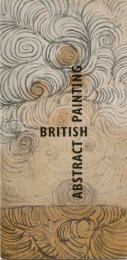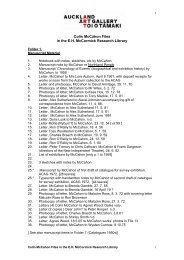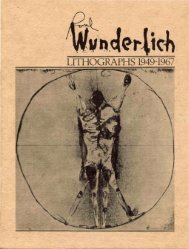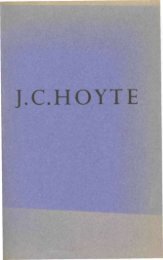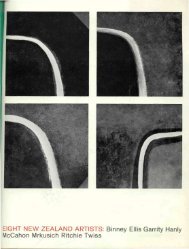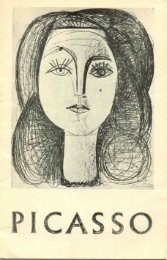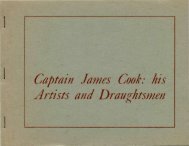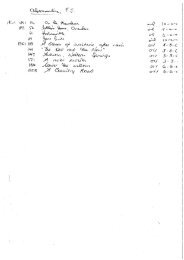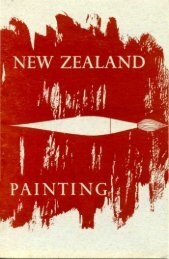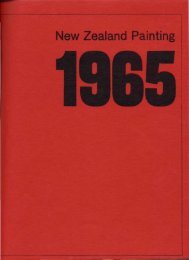Create successful ePaper yourself
Turn your PDF publications into a flip-book with our unique Google optimized e-Paper software.
Textiles / BasketryTextiles and basketry encompass a widefield, from objects constructed from cotton,linen, silk, wool, fur, feathers andsynthetic fibres, to kete and fishing/hunting equipment.Causes of DeteriorationFrom the moment of manufacture, a textileor basketry object begins to deteriorate.Its condition on entering acollection will be dependent on how it has been usedand cared for. There may also be inherent problems withthe method of manufacture of the object which willcause the fibres to break down rapidly—dye techniquesin the case of weighted silks and traditionally dyed blackfibre in Maori weaving, for example.Light—increases the rate of chemical breakdown inthe fibres and dyes. A textile will yellow, becoming brittle,and dyes will fade. The effects of light are cumulativeand irreversible, which means that once colours havefaded and fibres have been damaged by light, they cannotbe rejuvenated and any further exposure only addsto the damage. The ultraviolet portion of light, significantin daylight and in strong artificial light, causes themost damage.Temperature and Humidity—fluctuations in temperatureand humidity will accelerate deterioration oftextiles and basketry. Mechanical damage is caused bythe swelling and contracting of the elements within theartefact. A high temperature coupledwith high humidity will create an environmentwhere mould growth is likely.High temperature and low humidity willcause a drying out of the elements,increasing their brittleness, leading tosplitting and fracturing.Soiling—dirt from the air or throughpast use, along with pollutants, acceleratesthe deterioration of a textile.Together with the natural breakdown of its fibres andpoor storage, soiling is a major factor in the tendency ofa textile to become acidic. In a piece of costume, underarmareas exposed to perspiration become acidic, as doany food stains down the front of the garment. Theseacidic stains and soil cause chemical changes to fibres,weakening their structure.Soiling tends to be hygroscopic, holding moisture,increasing the chances of mould growth and insectattack. Dependent on the soil type, insects and rodentsmay be attracted to an artefact, causing considerabledamage. Soiling can also be abrasive if an object is beinghandled or in an unstable environment. Where an artefacthas come into contact with metals, rust staining canoccur which breaks down the fibres, leading eventuallyto holes within the fabric.Pollutants—are another source of damage. Metalthreads, often found in textile artefacts, are vulnerableto sulphur—a particular problem for areas such as39



